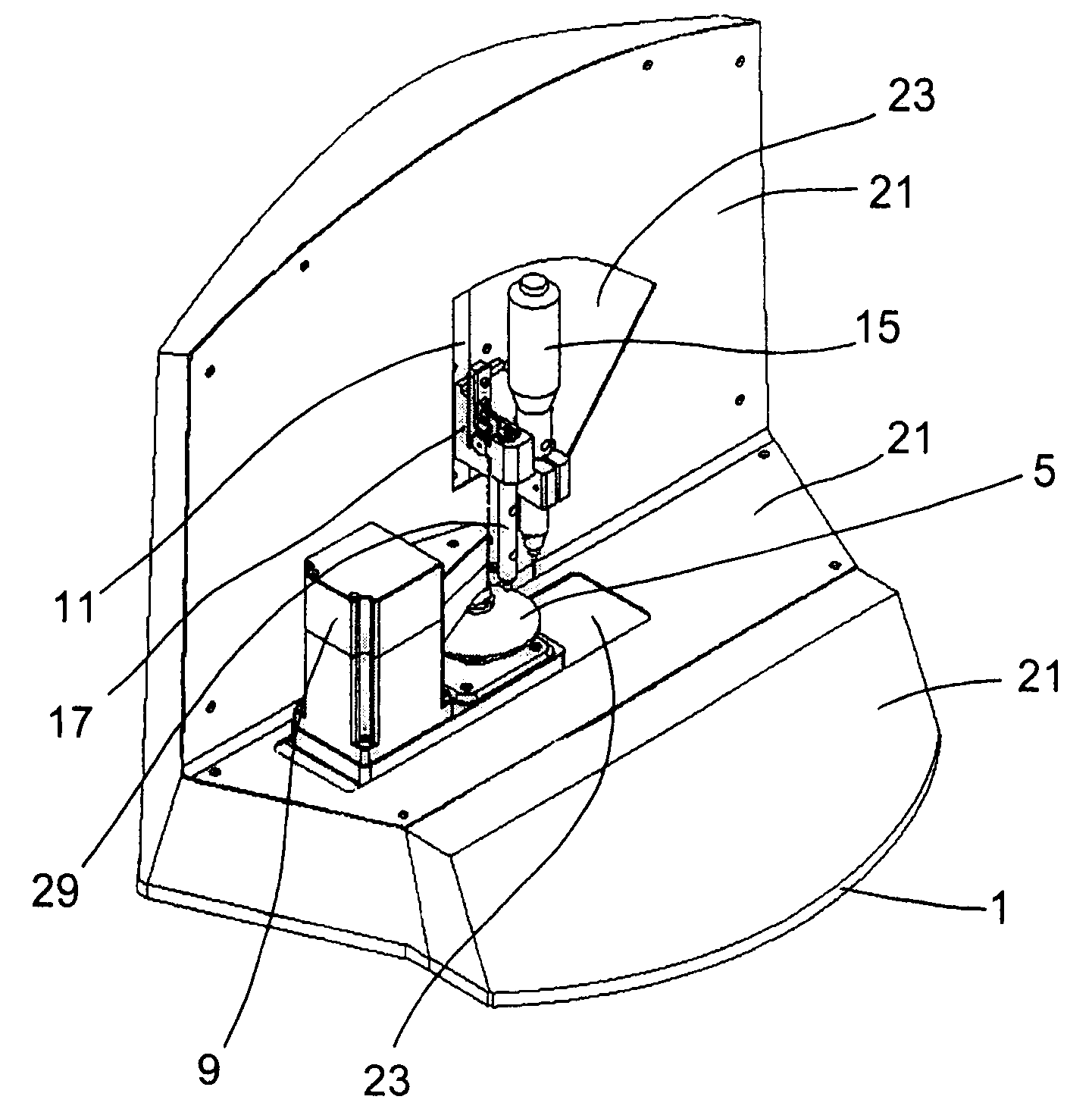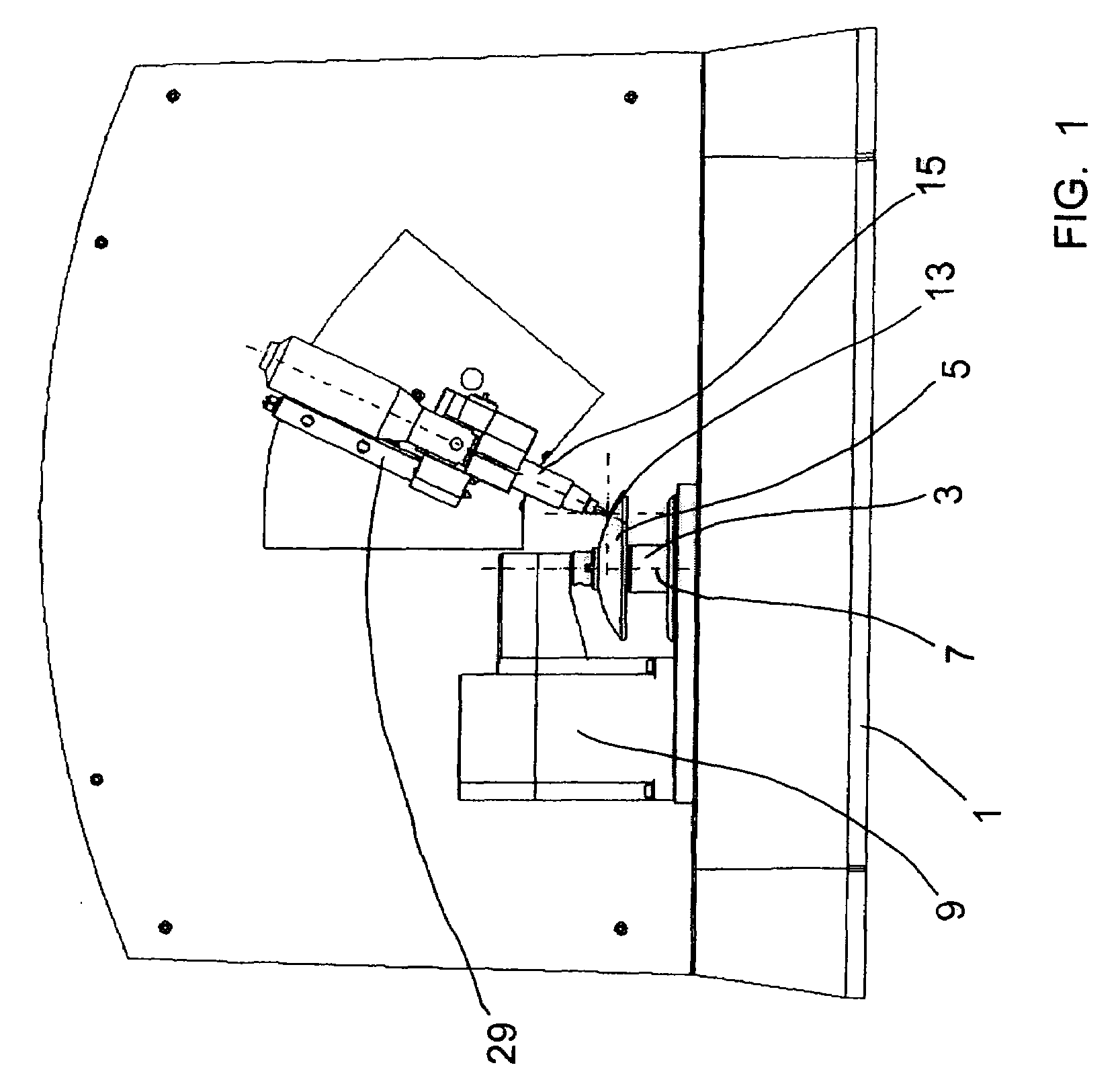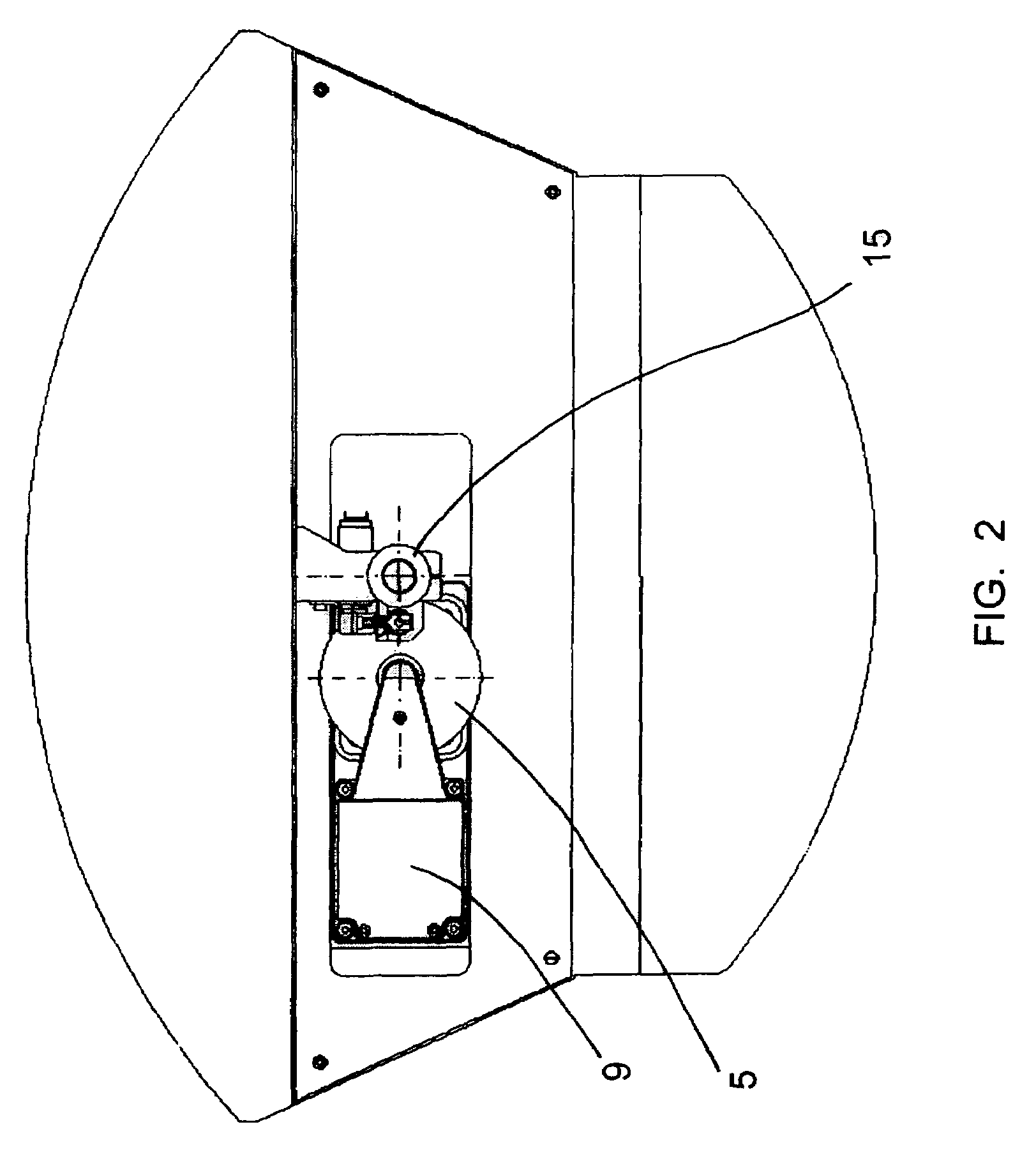Numeric control bore for boring an eyeglass lens and corresponding method
a technology of eyeglass lens and control bore, which is applied in the direction of large fixed members, milling equipment, measurement/indication equipment, etc., to achieve the effect of reducing the number of necessary apparatus
- Summary
- Abstract
- Description
- Claims
- Application Information
AI Technical Summary
Benefits of technology
Problems solved by technology
Method used
Image
Examples
Embodiment Construction
[0039]In FIGS. 1-4, it is shown a numeric control bore according to the invention. The bore has a support bedplate 1, on which attachment means 3 are mounted, clamping lens 5 so that its lens plane is substantially horizontal. The attachment means 3 comprise a suction pad and an attachment axis protruding from said suction pad and which, in a known way by a person skilled in the art, allows to define the position and the attachment angle of the suction pad with respect to the lens 5. The attachment means 3 form an C-shaped arch and lens 5 is fixed between their open ends, rotatable about the first upright rotating axis 7 coinciding with the attachment axis of the suction pad. Thanks to the rotation means 9 lens 5 can be rotated about the first rotating axis 7 as required. In this way, it is possible to determine the angle position of lens 5 at any moment, constituting the first degree of freedom of the bore.
[0040]The assembly formed by the attachment means 3 and the rotation means 9...
PUM
| Property | Measurement | Unit |
|---|---|---|
| angles | aaaaa | aaaaa |
| degree of freedom | aaaaa | aaaaa |
| degree of freedom | aaaaa | aaaaa |
Abstract
Description
Claims
Application Information
 Login to View More
Login to View More - R&D
- Intellectual Property
- Life Sciences
- Materials
- Tech Scout
- Unparalleled Data Quality
- Higher Quality Content
- 60% Fewer Hallucinations
Browse by: Latest US Patents, China's latest patents, Technical Efficacy Thesaurus, Application Domain, Technology Topic, Popular Technical Reports.
© 2025 PatSnap. All rights reserved.Legal|Privacy policy|Modern Slavery Act Transparency Statement|Sitemap|About US| Contact US: help@patsnap.com



